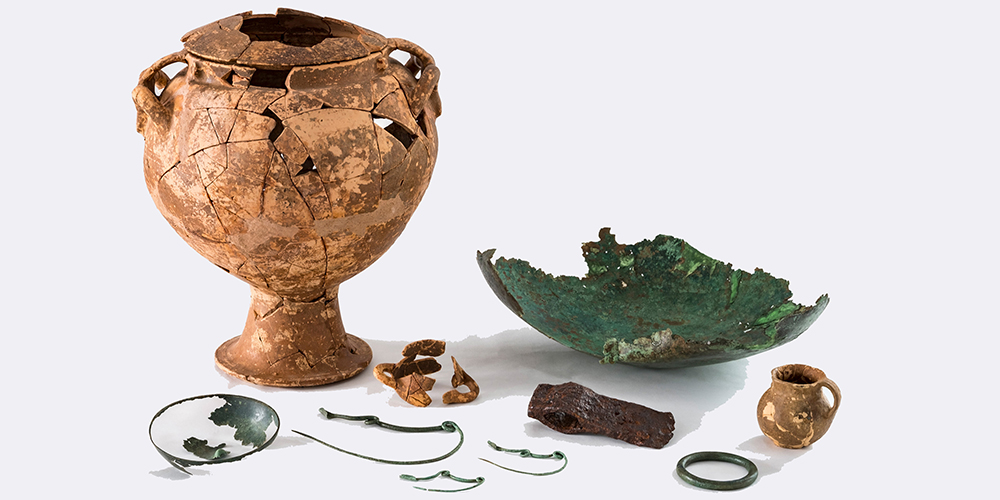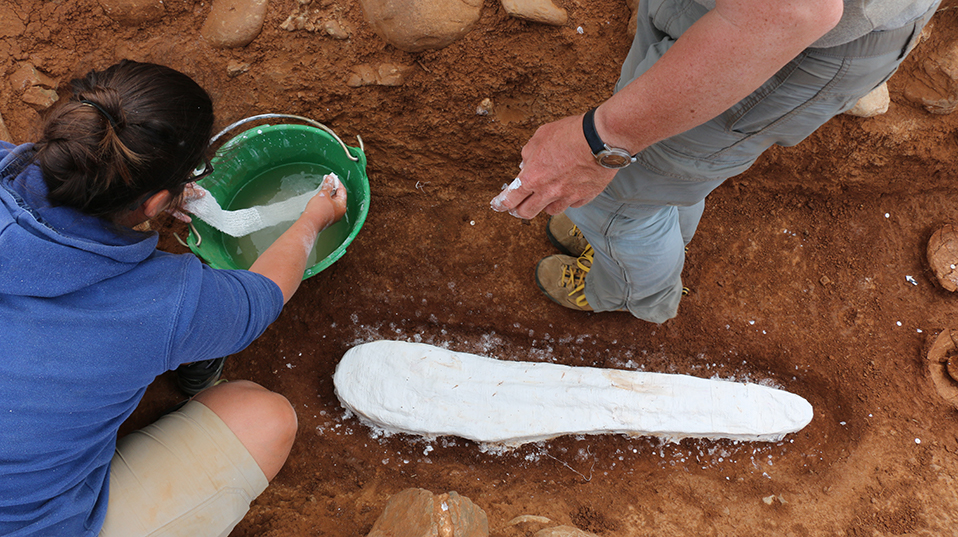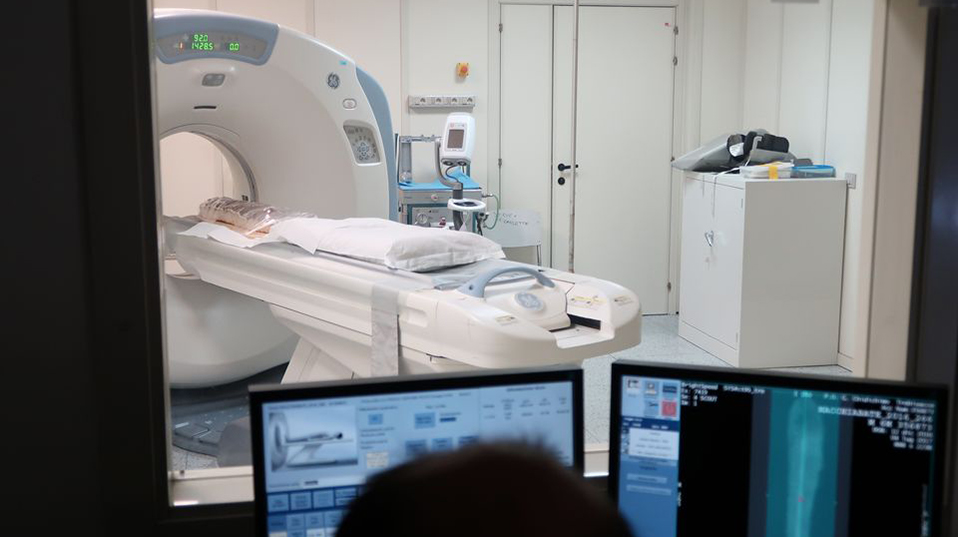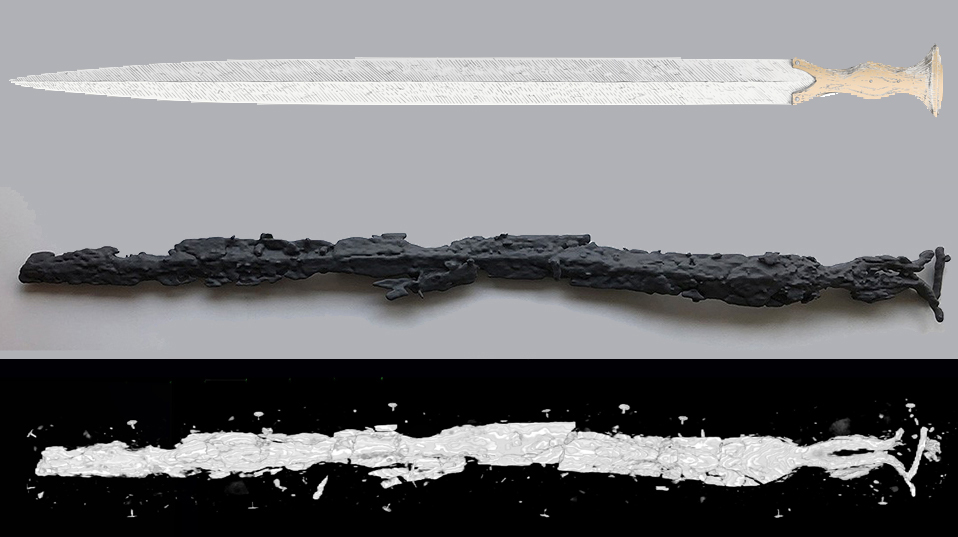Cultures in Contact – An exhibition presents 10 years of Basel excavations in Francavilla Marittima

More than 30 ancient graves have been uncovered by archaeologists and students of the University of Basel as part of an educational excavation in southern Italy. The graves date from a time when the first Greeks and Orientals arrived in the region about 3000 years ago and document the cultural exchange with the local population. The results and methods of the research project will now be presented in an exhibition at the University Library of Basel, which opens on 12 April 2019.
Even in ancient times, the south of Italy was a hub for migration. The Iron Age settlement of Francavilla Marittima (ca. 800-700 BC) played a key role as a contact point between the local population and traders and colonists from Greece and the Near East.
Since 2009, the Basel project has been researching the burial site of this settlement and has uncovered 33 graves of women, men, and children to date. Grave goods such as vessels, figurines, jewelry, and weapons offer a wealth of information about the lifestyle of the local elite and their reaction to the arrival of colonists.
Productive cultural exchange
“Initially, we suspected strong differences between the locals and the colonists,” states the archaeologist Prof. Martin Guggisberg, who has been leading the excavation. “After 10 years of research, however, we see the relationship in a new light: not confrontation and opposition determined the picture, but dynamic processes of cultural transformation that led to the gradual establishment of a new, Greek order from around 700 BC onwards.
The research team discovered evidence for the intertwining of the traditional and the new in the tomb of a local ruler. Among his grave goods were different sorts of vessels and bowls that point to Greece and prove the adoption of new drinking and cultural practices. By contrast, his inhumation in fetal position underlines his adherence to the local tradition.
Iron swords buried in plaster coat

Of special importance is also the discovery of three iron swords. They belong to the oldest documents of this new weapon type in Italy and document the penetration of new fighting techniques from the East. Since the swords were very badly preserved, the research team first used a plaster coat and then digital analysis methods to reconstruct them graphically and in 3D print.


From excavation to exhibition
Over the years, more than 70 students participated in the teaching excavation in Francavilla Marittima, learning how to use pickaxes, trowels, and brushes as well as the latest surveying technology and digital documentation methods. The students conceived the exhibition “Cultures in Contact” under the guidance of Atelier Degen+Meili, an exhibition consultancy based in Basel. The result of the collaboration is a presentation that not only makes visible the cultural contacts at the time but also presents the working methods of the project.
Prof. Dr. Martin Guggisberg from the Department of Archaeology at the University of Basel will introduce the exhibition on 12 April 2019 at 5.30 pm. Further speakers will be Prof. Dr. Thomas Grob, Vice President of the University of Basel, Dr. Pietro Maria Paolucci, Italian Consul in Basel, as well as Dr. Franco Bettarini, Mayor of Francavilla Marittima.
Francavilla Marittima: Basel excavation and exhibition
Cultures in Contact – 10 years of Basel excavations in Francavilla Marittima, University Library Basel, Schönbeinstrasse 18-20 (1st floor), Basel. The exhibition runs until 9 June 2019. Opening hours: Monday to Friday, 8 am – 10.30 pm, Saturday 9 am – 7 pm, free admission. On 15 May 2019, 6.15 p.m., there will be a theme evening with Prof. Martin Guggisberg. Public guided tours: 16 April and 15 May 2019, at 6.15 pm.
The Francavilla Marittima project is the result of a successful cultural collaboration between Switzerland and Italy. It has received support from various partner institutions, including the Archaeological Soil Research of the Canton of Basel-Stadt, the Department of Prehistoric and Scientific Archaeology of the University of Basel, and the Institute of Forensic Medicine of the University of Bern, the Max Planck Institute for Human History, Jena, the Museo Nazionale Archeologico della Sibaritide, the Soprintendenza Archeologia, Belle Arti e Paesaggio per le Province di Catanzaro, Cosenza e Crotone, the Municipality of Francavilla Marittima and the Ministero per i Beni e le Attività Culturali of the Italian State. The excavations are supported by the Swiss National Science Foundation, the Voluntary Academic Society of Basel, the Max Geldner Foundation and the University of Basel.
Press release from the University of Basel/Universität Basel



